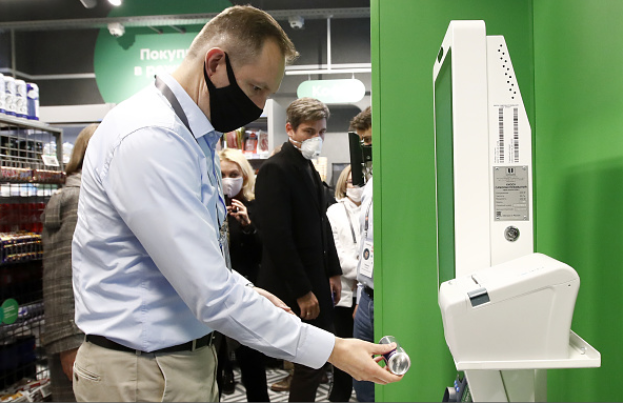The benefits and challenges of self checkout at the grocery store
For as long as there have been grocery stores, there have always been workers accompanying customers with their needs. In recent years many companies have installed self-checkouts to enable customers not to have processed their items to cashiers. While the need for self-checkouts is extremely convenient for customers with less than 20 items or for those who are just getting something quick to go, it can be incredibly time-consuming for the customers or for people who struggle with electronics–especially at grocery stores as many produce items have a code for every loose item.
As someone who has worked at a grocery store for over four years, it is not uncommon to see customers with baskets half-full causing delays for countless customers as they line up for their turn. While it may just be a simple inconvenience that lasts for a few minutes, it could last for over 30 minutes and sometimes an hour for workers. For those workers who have to watch self-checkout, it can be highly stressful as they have to watch the possibility of someone stealing or helping customers who need assistance. With a gradual increase of minimum wage that started in 2017 and will finish on Jan. 1, 2023, at $15 an hour, companies have had to adapt by giving fewer hours to employees and causing stress throughout everyday duties as they do the job of multiple people. The best solution for them to save convenience is installing self-checkouts.
One of the biggest questions is what would happen to cashiers as they could be seen as extinct in 10 years or so. As many grocery stores have countless cashiers, leading to downtime between customers, it could lead to more productivity on the sales floor. Shelves of water, bread and other items that would be left empty for most of the day could be filled, allowing better sales and less backstock.
Many customers may be in a rush to get food before school or to get something to cook for dinner, and having to wait with only a handful of items is a hassle. Only eight cashiers are available with self-checkout it enables companies to double the number of check stands nearly. A study was conducted by civic science of 1,969 participants to see if they preferred self-checkout, cashiers, or had no preference. Of the 1,969 participants, 46% aged from 18-34, 35% aged from 35-54, 19% age 55 or older. The advancement of technology and its changing our everyday lives will soon make it difficult for the older generations to buy groceries.
Cashiers should always be allowed because it allows people with disabilities, orders of over 40 items or for any reason really. For people visiting or those who get off of work, it would be extremely annoying to process their groceries as if they were workers. People who are willing to scan their items should be given a discount as an incentive to use self-checkout.
Recently, Amazon opened their first cashier-less grocery store in 2018 in Bellevue, Wa., and since have opened their most recent in London. According to Reuters, the stores work by having, “sleek black cameras monitoring from above and weight sensors in the shelves to help Amazon determine exactly what people take. If someone passes back through the gates with an item, his or her associated account is charged. If a shopper puts an item back on the shelf, Amazon removes it from his or her virtual cart. Any customer in the alcohol section will have their ID checked by an Amazon associate.”
The transition from cashiers to cashier-less and even self-checkouts in grocery stores will impact how consumers interact in stores now. Those who struggle with some form of social anxiety and prefer not to talk to someone could help them feel more relaxed without the fear of social interaction.

Andrew is a journalism major. This is his second year with The Chaparral, and he covers sports. Andrew's favorite sports include golf, football and motorsports....






